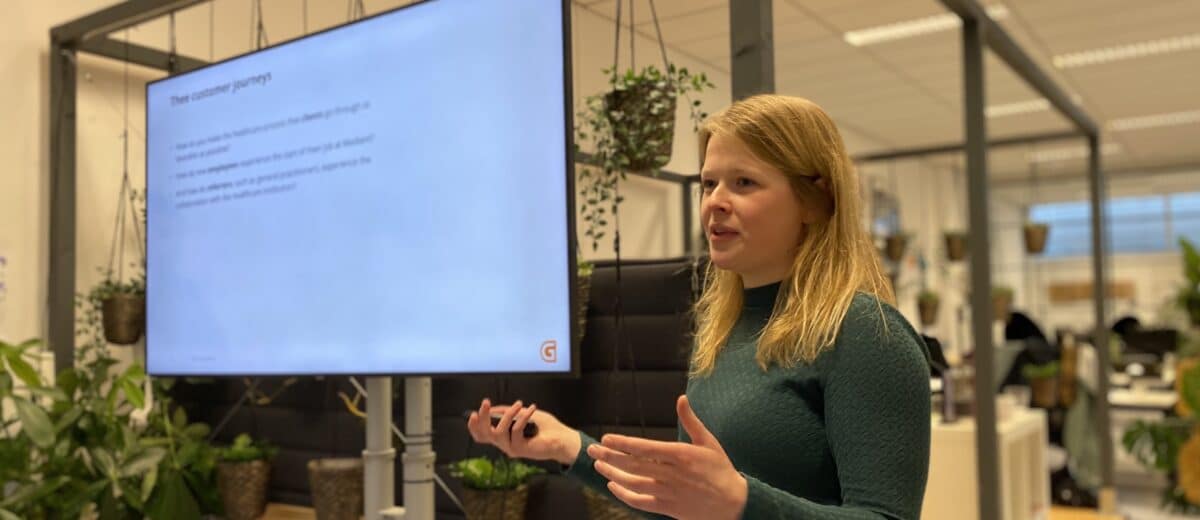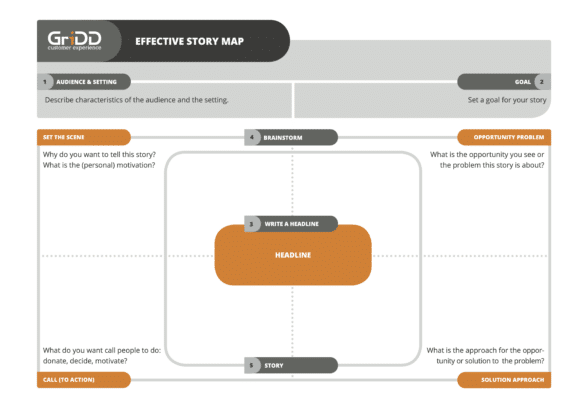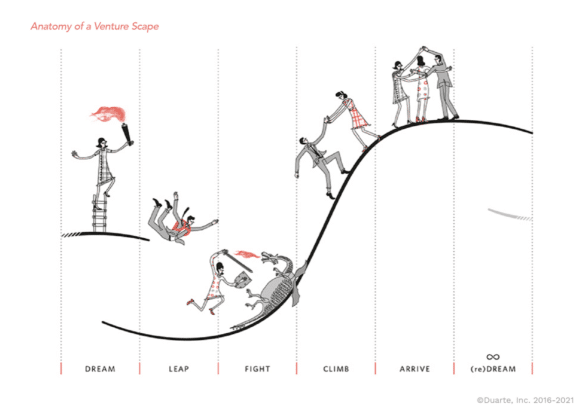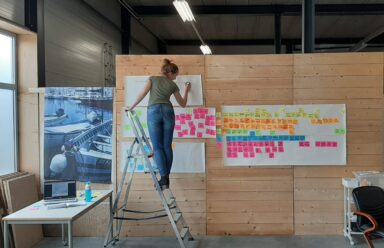
The Art of Storytelling: an essential skill for change makers
By Mark Geljon & former GriDD employee Laura van ‘t Hul
Storytelling, in our view, has always been the method for achieving change. All the great change agents were great storytellers. Martin Luther King, Nelson Mandela, Steve Jobs, Richard Branson, Boyan Slat, but also Elon Musk: what they have in common is their ability to tell a story that the right people believe in, so they can help make it happen.
But having a clear vision is not enough. The bigger the ambition, the more complicated the puzzle that those involved are stuck with: HOW on earth are we going to do this? How do we keep our customers happy, build a new organization, upgrade our systems, get the knowledge in-house, position ourselves in the right way in the market, keep the employees involved… and all at the same time! The result is often a combination of programmes running in parallel and demanding a lot from the people in organizations. This creates a gigantic change pressure that reveals itself especially in specific places. “How will I still get to work?” is a question you often hear there
Transformational storytelling
Not surprisingly, with all these changes, change fatigue sometimes sets in, in your organization. Entire teams are set up to implement the latest plan or idea, which often does not even bring the desired results. You can only really bring about change if your employees or customers are part of the story and understand their role and contribution. You do this with transformational storytelling, i.e. telling the right change story to and with the right people. After all, change is not only about your organization or management, but also about your people or customers. Only by giving them an active role in this story will you have a chance of succeeding. But what does this actually mean? And how do you tackle it? We share our experiences with you in this article.
From strategy to story
The management of your organization has probably been on board for a long time, but your colleagues still know nothing. Do you only tell the management’s story? Then you are skipping a whole group of colleagues. So don’t bet on communicating, but on creating and telling a common story.
Why is this change so important? What journey will your organization take? What is the thinking behind this choice? What role does each employee or department play in this, and what stage of the change are they currently in? What needs to happen? All relevant and valuable points to think about. And it is often better to do this with your team rather than for your team. Go on a voyage of discovery together and translate it into a joint story.
So see this very moment as an opportunity to connect and not just impose something on others. There are all kinds of methods and techniques to successfully translate your strategy into a story in which everyone has a place. We developed our own methodology that we have often applied in a change context: the effective storymap. A co-creation process in which you structure a complex story together, reduce it to its essence and shape it into something people can relate to. You can easily convert the outcome into a communication tool: think of a speech, video or a visualization of the path you are going to take as an organization.

Connect with the workplace
Much is written about the resistance employees feel to change. Often this arises from fear or ignorance of what is to come, or frustration at not being involved: “it doesn’t matter what I think about it anyway”. Therefore, engage with all the groups involved around your change about the change story. Take the time to listen to each person’s fears, ideas, doubts and uncertainties. Make clear what hard context is, that which we are dealing with now. Also state what the space is but, above all, what the perspective is.
Discuss where certain groups stand in the story, what they are up against, what role they can play and what this story means to them. Reflect together on their position on the change journey and how they view it. After all, within your big change story there are countless small stories that all have the same impact on the outcome.
In her book Illuminate, Nancy Duarte beautifully describes the different phases employees can find themselves in during a change, adapting your story to this is the essence, according to her:

Image: the Anatomy of a Venture Scape by Nancy Duarte, from her book Illuminate.
Full Circle
What is important next is that you actually do something with this input. To get your people to go along with the change, they have to really want it. So make sure your story addresses the perspectives of all employees. Evaluate everyone’s role in the story and realize that you will not get the entire organization on board with a one-size-fits-all story. From this, a concrete and empathetic journey emerges that everyone can relate to.
Tools for change
Show, don’t tell. Make your change story concrete for everyone involved in your organization by deploying the right tools for change. This is because there is no point in just pointing people out; you need to bring them along in a visual and interactive way to start the conversation. For this, you can come up with all kinds of great tools and playful solutions. For example, a talking board, a coaching game, a vlog or a construction kit that employees can put together themselves. But also think of a portal or an Excel document with questions and answers. The right answer for your organization is tailor-made, so choose something that suits you and engages your employees.
The importance of transformational storytelling
So, telling the right stories is also essential to succeed and beat “dragons” (read: bumps) in your change journey. It makes sense it’s cool, and it leads to the right result. You believe in something, involve the right people, and this is how the story comes to life. We get very enthusiastic about coming up with the best tools and methods together with you to let everyone take part in this journey. So we are very curious: with which story are you going to make the world a little better?
 GriDD
GriDD 

